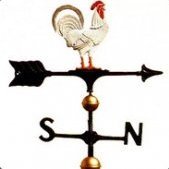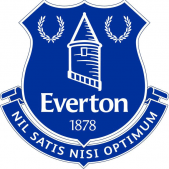Leaderboard
Popular Content
Showing content with the highest reputation on 06/30/21 in all areas
-
I'm not, but I wish I could contribute something to this really great project! But good to know that you're on it! I just checked, and there are two entries with plots_dir. I added this in a previous release and probably didn't notice that there was already a variable in the config. It states that I have 650 plots (which is correct), so it is limited by 150 in this page. Maybe you could create a link to a new page or just display all plots when clicking a button to avoid listing all from the beginning. I really appreciate all your help! Keep up the good work! If there's a way to virtually buy you a beer, let me know2 points
-
Just a simple little plugin to act as a front end for any little scripts that you may have that you may need to run every once in a while, and don't feel like dropping down to the command line to do it. (Or anything that I happen to run across here on the forum that will be of use to some people) Install it via Community Applications Only a couple included scripts: - Delete .DS_Store files from the array - Delete any dangling images from the docker.img file - Display the size of the docker container's log files (to see if a docker app is filling up the image file through excessive logging) Additional Scripts from myself (and hopefully other users) can be found here: To add your own scripts: Within the flash drive folder config/plugins/user.scripts/scripts create a new folder (each script is going to have its own folder) - The name doesn't matter but it can only contain the following characters: letters ([A-Za-z]), digits ([0-9]), hyphens ("-"), underscores ("_"), colons (":"), periods ("."), and spaces (" ") Or, you can hit the button that says "Add Script", then give the script a name. Hovering over the script's name will then give you additional options. Including online editing... Create a file called description that contains the description of the script. Create a file called script this will be the actual script. Few notes: So as to make things easier for people: The script file can be created with any text editor you choose. DOS line endings will be automatically converted to Linux style endings prior to execution. #!bin/bash is automatically added to every script prior to execution to help out the noobies EDIT: This is only added if no interpreter is specified (ie: #!/bin/bash) If an interpreter is already specified (ie: #!/usr/bin/php), then line is not added Techie Notes: The scripts are actually copied and executed from /usr/local/emhttp/plugins/user.scripts/ /tmp/user.scripts/tmpScripts so if there are dependencies (other scripts, etc) stored in the same folder as the script file, you will need to specify the full path to them. Interactive (ie: answering yes/no to a question) scripts will not work.1 point
-
Amazon.es and Amazon.it have a good very price for these: https://www.amazon.es/gp/product/B00RQYHL6O/ref=ox_sc_act_title_1?smid=A1AT7YVPFBWXBL&psc=1 They are usually around 300€, which is the current price on Amazon.fr or Amazon.de for example. EDIT: Price went back to normal on amazon.es, around 300€, not so low but still a lower normal 200€ currently on amazon.it1 point
-
Yes, sorry about that We just deployed the temporary fix to the cloud again, if you reload the page you should be good. The permanent fix @OmgImAlexis mentioned will go out in the next release of the plugin.1 point
-
No worries. Funny thing thou is the last time I reported it which was several weeks ago you guys put out something and it fixed it. Unless you put out another release and forgot to put the patch back into the newest. Lol I mean crazier things have happened when your dealing with 1000's of lines of code. I did run unraid-api stop and now my drives are not coming up by themselves. Weird I'm still remoted in too. Must be the deamon that makes the connection, but doesn't actually control keeping the connection. Just another tid bit of info if that helps at all.1 point
-
Further Update: I encountered the same issue again on my completely fresh install and managed to isolate the cause this time. The crashing began after installing the latest MSI Afterburner 4.6.3 beta. As soon as I rolled back to 4.6 the BSODs immediately stopped. Maybe this can help people searching for this issue in the future... Andy1 point
-
Hi, glad to hear it! Please share why you aren't able to run Machinaris as a remote harvester on Windows? Hi, if the primary instance is a Machinaris fullnode/controller and the remote worker is a Machinaris harvester, then yes in Machinaris v0.4.0 only the plots attached to the Machinaris fullnode are included in ETW calculation. Unfortunately, I didn't catch this defect until just after the release. However, I have now fixed the ETW calculation to include all plots across the Machinaris-managed farm. Currently available in the test version and fix will be available in next release. Thanks for the report!1 point
-
No, that log line is part of the Chiadog start-up process indicating the log monitor is activating its various checks, one of which is to watch for added coins. As it occurs at the beginning of every Chiadog launch, this activation of the checking module does not indicate the check was actually triggered by a real event. Sorry!1 point
-
Ein All-In-One System hat diverse Nachteile, denen du dir bewusst sein musst: https://forums.unraid.net/topic/99393-häufig-gestellte-fragen/?tab=comments#comment-1007233 Da du eh auf Mac setzt, wäre denke ich die beste Option, dass du einen Mac nutzt, der auf die VMs deines separaten Unraid Servers zB über Parsec zugreift. Bedenke auch, dass die Nutzung von MacOS in einer VM nicht offiziell unterstützt wird. Der Betrieb wird durch einen Nutzer der Unraid-Community ermöglicht und streng genommen verstößt es gegen die Apple Nutzungsbedingungen. Also ähnliche Situation wie bei einem Hackintosh.1 point
-
Die Lizenzen sind NICHT an den Rechner, sondern an den genutzten USB-Stick gebunden. Also einfach den Stick in den gewünschten Rechner stecken.1 point
-
Hey, sorry for the slow reply, was a crazy weekend. The kext worked for me too! My card has the 8086,1533 for the id's, so it must have just been the new kext in 11.4 Woo! Thank you so much!1 point
-
ein Satz Monitore, Tastatur usw, eine GraKa aber zwei VMs? gleichzeitige/simultane Nutzung: nein abwechselnde Nutzung: ja Zugriff aufs NAS von der aktiven VM aus: ja, logisch Graka für unRaid: nicht nötig, wenn der Hobel ohne GraKa "hochkommt" (was bei einer Graka im System für die VMs ja kein Problem sein sollte, bis unRaid gestartet ist).1 point
-
So wie SMR funktioniert, ist es gänzlich ungeeignet für eine 100% volles RAW Laufwerk. SMR verschiebt nämlich ständig und räumt auf, damit zukünftige Schreibvorgänge schnell bleiben. Das geht aber nicht, wenn alle Sektoren beschrieben wurden.1 point
-
@Soulflyzz...do you have a working homeassistant setup already? Looks like there is a plugin made available for use/deployment directly from within homeassistant: https://github.com/MaxWinterstein/homeassistant-addons Edit: besides, this sub-forum is dedicated to guides, not docker requests. @JorgeB ...can you move this to the appropriate section, maybe it will draw more attraction there1 point
-
1 point
-
lol, yeah I tend to do that from time to time. Plus seeing the writes slowly add up and the remaining life slowly tick down on the SSD has been an itch I needed to scratch for some time. Figure I will see what is possible under the best case setup and then back off to comfortable compromise after that. For example the above docker side commands are well worth the effort IMHO as they "just work" once you know what containers need which command and have a big effect on writes. Some of the appdata writes are pretty simple fixes as well such as reducing/disabling logging or moving logs to an internal ramdrive instead of writing to appdata etc. My goal is to create another thread with a guide once I finish my testing. For now these posts are basically my journal on the matter for later reference.1 point
-
For future reference when UNRAID indicates issues with a disk: 1. STOP all activity on the server 2. Post a full diagnostics (Tools -> Diagnostics) zip file here with an explanation of the situation 3. WAIT until someone responds with instructions 3a. KEEP waiting until someone responds - general tinkering tends to lead to data loss 4. Follow them TO THE LETTER1 point
-
Good day, thanks for testing the test version. Please stop the Machinaris container, delete the following files, then restart: /mnt/user/appdata/machinaris/machinaris/dbs/machinaris.db /mnt/user/appdata/machinaris/machinaris/dbs/stats.db /mnt/user/appdata/machinaris/chiadog/dbs/chiadog.db On startup wait a few minutes for things to populate. Afterwards, take a look at /mnt/user/appdata/machinaris/machinaris/logs/migration.log. Thanks!1 point
-
Yes, it also reads all the disks during a parity check.1 point
-
The logs are in RAM (with the rest of the OS). They are lost on reboot. You can set up a syslog server, either external or on the flashdrive : You can also go to Tools / Diagnostics and attach the full zip to your next post. It can help understand your system and maybe detect issues already visible before it is stuck.1 point
-
You need to run xfs_repair without -n (no modify flag) or nothing will be done. No, disks have to be formatted.1 point
-
https://amzn.com/dp/B009GULFJ0/1 point
-
As a general rule SATA power connectors shouldn't be the source for a splitter, a 4 pin molex style to multiple SATA outputs is much more reliable, if you must use splitters. Much better to avoid splitters altogether if possible.1 point
-
Diags are just after booting, but there are already ATA errors in multiple disks: Jun 25 07:19:58 RetroShare-Plex kernel: ata6: link is slow to respond, please be patient (ready=0) Jun 25 07:19:58 RetroShare-Plex kernel: ata1: link is slow to respond, please be patient (ready=0) ... Jun 25 07:22:27 RetroShare-Plex kernel: ata3: link is slow to respond, please be patient (ready=0) You should replace cables on these disks, could also be a power issue.1 point
-
Looks as if your diagnostics appear to be shortly after booting and not taken while you were exhibiting the problem? Regardless, they are enough to show that you have file system corruption on disk7 so you should put the array into maintenance mode and the click on the drive on the Main tab to run a file system check and repair.1 point
-
That's not normal, please post the diagnostics: Tools -> Diagnostics1 point
-
Probably this will fix your issue: With the upgrade to 11.4 your i210 should use a new lan driver (com.apple.DriverKit-AppleEthernetE1000.dext) and not the AppleIntelI210Ethernet.kext Luckily you can still force the kext to load, because that kext is still in System/Library/Extensions, inside the plugin directory of IONetworkingFamily.kext So, proceed as follows: 0. Check that vendor-id is 8086 and product-id is 1533 for your i210, otherwise write here product/vendor ids for a new kext, or modify yourself the attached kext with your data 1. Download the attached kext and unzip it 2. Mount your EFI, copy the extracted kext into /EFI/OC/Kexts/ 3. Open config.plist and add the new kext to configuration: <key>Kernel</key> <dict> <key>Add</key> <array> ...... ...... ...... <dict> <key>Arch</key> <string>x86_64</string> <key>BundlePath</key> <string>i210.kext</string> <key>Comment</key> <string>Force kext loading for i210</string> <key>Enabled</key> <true/> <key>ExecutablePath</key> <string></string> <key>MaxKernel</key> <string></string> <key>MinKernel</key> <string></string> <key>PlistPath</key> <string>Contents/Info.plist</string> </dict> </array> 4. Reboot and try i210.kext.zip1 point
-
Glad to hear, I'll update my post about the cables as well.1 point
-
First try another of the SAS ports to see if that then makes the HDD disks show. If it does, then go back in to DOS and flash the 4-11.BAT file instead. What version is the card? D2607-A21 or A11 cause normally a sticker on the card which tell you :-) that dictates with 4-11.bat or 4-21.bat you run. I'm not 100% sure if the card needs extra drivers for windows 10 for it to work, but I have a feeling Windows should install the required drivers. If not I think this is the driver your after https://docs.broadcom.com/docs-and-downloads/host-bus-adapters/host-bus-adapters-common-files/sas_sata_6g_p20/LSImpt_SAS_Windows_8-1_Windows_server_2012_R2_P20.zip You should be able to see the HBA in the device manager under storage controllers, if you want to see if its picked up the driver or not. Jonny1 point
-
sas2hax -o -sasadd 5003005700dbf920 just make a address up. If you got two cards make sure the addresses are different, change the last number from 0 to 1 say1 point
-
Had the same error and it disappeared after a server restart. I also used the default configuration (Flash -> Syslinux configuration -> Default button). Though, the two errors and the warnings in the log are still there. Before 6.6.x had no problems starting VMs.1 point
-
Does the below commands till find the SAS card? megacli -adpallinfo -aall Also do you not have a UEFI enabled computer at all? Some people have machines where they just can't flash sas cards at all, even using DOS or EFI shell. I've think I've read people flashing D2607 with DOS but I think UEFI is required.1 point
-
The sas2hax creator has now created new tool for doing this process from within Linux itself. I haven't tested this but maybe an easier solution. https://github.com/marcan/lsirec Original Post Below I've add some script files to the method speed up the process. Updated Files - https://mega.nz/#!bp1lwAwZ!qrQics2qslPxCRFSI7pCaL-JECCauM_xqp00GQPloSg MIRROR - https://drive.google.com/file/d/18aULGYQEyMJcW7rUAk8sddUDX_Rozq68/view?usp=sharing Steps Create DOS USB using RUFUS and copy these files to the USB. GUIDE link Each task has 2 commands you can do. The first one saves you typing the commands by using script/bat files. Recommendations Unplug all drives but the USB, helps with the EFI shell bit Plug D2607 in to the first x16 slot, even if it means unplugging another card, had systems where you could only flash it if it was in the first slot. Make sure you have SAS to SATA breakout cable not SATA to SAS reverse breakout cable. (Thanks johnnie.black for pointing this out.) Boot the USB in non UEFI mode. (DOS) Then do the following commands Get SAS Address of the card 1.BAT or megacli -adpallinfo -aall | find /i "sas address" > sas_addr.txt Backup SBR incase we need it. We probably wont though. might need this if you get stuck for support. (Only run this once per card otherise you'll lose the original, before flashing the patched one below) 2.BAT or megarec -readsbr 0 O-SBR.bin Clean Flash the card. If the command fails to flash, just keep trying it until it completes. Can take 10+ attempts 3.BAT or megarec -cleanflash 0 Flash SBR for A11 or A21 - Just change the number in the command for the card you doing. 4-21.BAT or megarec -writesbr 0 SBR-A21.bin Clean Flash the card 5.BAT or megarec -cleanflash 0 Reboot in to UEFI shell on the usb Some motherboards you can go into the boot menu and do the UEFI option for the USB stick, best to check out in the manual or online. Your mount point for your USB might not be FS0, could be FS1, FS2 and so on. Either unplug all drives so it's just the USB drive or, when the EFI shell starts it prints the drives it see's in yellow, you might be able to work it out from there. Once booted in to EFI Shell, do the following commands Change to USB fs0: Flash IT Mode Firmware 6.NSH or sas2hax -o -f 2118it.p20.bin It will error about it can't reset the adapter, don't worry its normal. Reboot and then boot the UEFI on the usb again Do the following commands fs0: Now we Flash IT Mode Firmware again 7.NSH or sas2hax -o -f 2118it.p20.bin -b mptsas2.p20.rom Get SAS Address we saved 8.NSH or type SAS_ADDR.TXT Set SAS Address of the card. Change the address to the one that got printed out. sas2hax -o -sasadd 5003005700dbf920 Reboot the USB in non UEFI mode. (DOS) Do the following commands Flash SBR for A11 or A21 - Just change the number in the command for the card you doing. 4-21.BAT or megarec -writesbr 0 SBR-A21.bin Notes: Making up a SAS address is fine, just make sure you don't flash two cards with the same address. You can find more help cross flashing the D2607 card here. He made the sas2hax application. https://marcan.st/2016/05/crossflashing-the-fujitsu-d2607/ I add no -noreset when I was flashing some card but seems to cause issues, so I left it without. Had to reboot twice when ever I did it, not sure why though. Orignal post: https://forums.lime-technology.com/topic/12114-lsi-controller-fw-updates-irit-modes/?do=findComment&comment=522038 Flash Fujitsu - D2607.zip1 point
-
http://lime-technology.com/forum/index.php?topic=50416.0An addon for the user scripts plugin. One of the scripts in the thread will move all files for a cache only share from the array (if any are there) back to the cache drive where they belong1 point
-
Move Cache Only Share and Move Array Only Shares These two scripts will analyse your shares and move any files found on the array (for cache-only shares) to the cache drive, and its reverse script to move any files found on the cache drive to the array (for array-only shares) These two scripts require user.scripts version 2016.07.16+ to operate Move Cache Only Shares #!/usr/bin/php <?PHP function getRsyncReturnValue($returnValue) { $returnMessage[0] = "Success"; $returnMessage[1] = "Syntax or usage error"; $returnMessage[2] = "Protocol incompatibility"; $returnMessage[3] = "Errors selecting input/output files, dirs"; $returnMessage[4] = "Requested action not supported: an attempt was made to manipulate 64-bit files on a platform that cannot support them; or an option was specified that is supported by the client and not by the server."; $returnMessage[5] = "Error starting client-server protocol"; $returnMessage[6] = "Daemon unable to append to log-file"; $returnMessage[10] = "Error in socket I/O"; $returnMessage[11] = "Error in file I/O"; $returnMessage[12] = "Error in rsync protocol data stream"; $returnMessage[13] = "Errors with program diagnostics"; $returnMessage[14] = "Error in IPC code"; $returnMessage[20] = "Received SIGUSR1 or SIGINT"; $returnMessage[21] = "Some error returned by waitpid()"; $returnMessage[22] = "Error allocating core memory buffers"; $returnMessage[23] = "Partial transfer due to error"; $returnMessage[24] = "Partial transfer due to vanished source files"; $returnMessage[25] = "The --max-delete limit stopped deletions"; $returnMessage[30] = "Timeout in data send/receive"; $returnMessage[35] = "Timeout waiting for daemon connection"; $return = $returnMessage[$returnValue]; if ( ! $return ) { $return = "Unknown Error"; } return $return; } $shareList = @array_diff(@scandir("/boot/config/shares"),array(".","..")); if ( ! is_dir("/mnt/user") ) { echo "Array Must Be Started And User Shares Must Be Enabled To Utilize This Script. Exiting.\n"; return; } if ( ! is_dir("/mnt/cache") ) { echo "Cache Drive Not Installed. Exiting\n"; return; } if ( ! $shareList ) { $shareList = array(); } foreach ( $shareList as $shareCfg ) { $config = @parse_ini_file("/boot/config/shares/$shareCfg"); if ( ! $config ) { continue; } if ( $config['shareUseCache'] != "only" ) { continue; } $share = pathinfo($shareCfg,PATHINFO_FILENAME); if ( is_dir("/mnt/user0/$share") ) { echo "Share $share set to be cache-only, but files exist within array. Moving the files. Depending upon the size and number of files, this may take a bit\n"; $source = escapeshellarg("/mnt/user0/$share/"); $destination = escapeshellarg("/mnt/cache/$share"); $flag = true; exec("rsync -avXHq --remove-source-files $source $destination",$output,$returnValue); if ( $returnValue ) { echo "Errors Occurred: ".getRsyncReturnValue($returnValue)."\n"; $errors = true; } else { exec("rm -rf $source"); } } } if ( ! $flag ) { echo "All cache-only shares already only existed on the cache drive\n"; } else { if ( ! $errors ) { echo "All shares set to be cache-only have now had their files previously existing on the array to now be on the cache drive\n"; } else { echo "Errors Occurred In The Copying\n"; } } ?> Move Array Only Shares #!/usr/bin/php <?PHP function getRsyncReturnValue($returnValue) { $returnMessage[0] = "Success"; $returnMessage[1] = "Syntax or usage error"; $returnMessage[2] = "Protocol incompatibility"; $returnMessage[3] = "Errors selecting input/output files, dirs"; $returnMessage[4] = "Requested action not supported: an attempt was made to manipulate 64-bit files on a platform that cannot support them; or an option was specified that is supported by the client and not by the server."; $returnMessage[5] = "Error starting client-server protocol"; $returnMessage[6] = "Daemon unable to append to log-file"; $returnMessage[10] = "Error in socket I/O"; $returnMessage[11] = "Error in file I/O"; $returnMessage[12] = "Error in rsync protocol data stream"; $returnMessage[13] = "Errors with program diagnostics"; $returnMessage[14] = "Error in IPC code"; $returnMessage[20] = "Received SIGUSR1 or SIGINT"; $returnMessage[21] = "Some error returned by waitpid()"; $returnMessage[22] = "Error allocating core memory buffers"; $returnMessage[23] = "Partial transfer due to error"; $returnMessage[24] = "Partial transfer due to vanished source files"; $returnMessage[25] = "The --max-delete limit stopped deletions"; $returnMessage[30] = "Timeout in data send/receive"; $returnMessage[35] = "Timeout waiting for daemon connection"; $return = $returnMessage[$returnValue]; if ( ! $return ) { $return = "Unknown Error"; } return $return; } $shareList = @array_diff(@scandir("/boot/config/shares"),array(".","..")); if ( ! is_dir("/mnt/user") ) { echo "Array Must Be Started And User Shares Must Be Enabled To Utilize This Script. Exiting.\n"; return; } if ( ! is_dir("/mnt/cache") ) { echo "Cache Drive Not Installed. Exiting\n"; return; } if ( ! $shareList ) { $shareList = array(); } foreach ( $shareList as $shareCfg ) { $config = @parse_ini_file("/boot/config/shares/$shareCfg"); if ( ! $config ) { continue; } if ( $config['shareUseCache'] != "no" ) { continue; } $share = pathinfo($shareCfg,PATHINFO_FILENAME); if ( is_dir("/mnt/cache/$share") ) { echo "Share $share set to be array-only, but files exist on the cache drive. Moving the files. Depending upon the size and number of files, this may take a bit\n"; $source = escapeshellarg("/mnt/cache/$share/"); $destination = escapeshellarg("/mnt/user0/$share"); $flag = true; exec("rsync -avXHq --remove-source-files $source $destination",$output,$returnValue); if ( $returnValue ) { echo "Errors Occurred: ".getRsyncReturnValue($returnValue)."\n"; $errors = true; } else { exec("rm -rf $source"); } } } if ( ! $flag ) { echo "All cache-only shares already only existed on the cache drive\n"; } else { if ( ! $errors ) { echo "All shares set to be cache-only have now had their files previously existing on the array to now be on the cache drive\n"; } else { echo "Errors Occurred In The Copying\n"; } } ?> Move_Shares.zip1 point
-
Well, I think you are doing something wrong. But without any more information (xml-config, screenshots, etc.), I could only guess... Are you using the default "Server2016" template that comes with unraid? Can you confirm, that your vDisk is at least 30G big? Did you select the "viostor->w2kr2->amd64" folder when you were loading the driver? I had no trouble in 6.1.X with a OVMF virtual machine and on 6.2 beta it runs just as smooth. Installed Prev. 4 yesterday and Prev. 5 today.1 point










